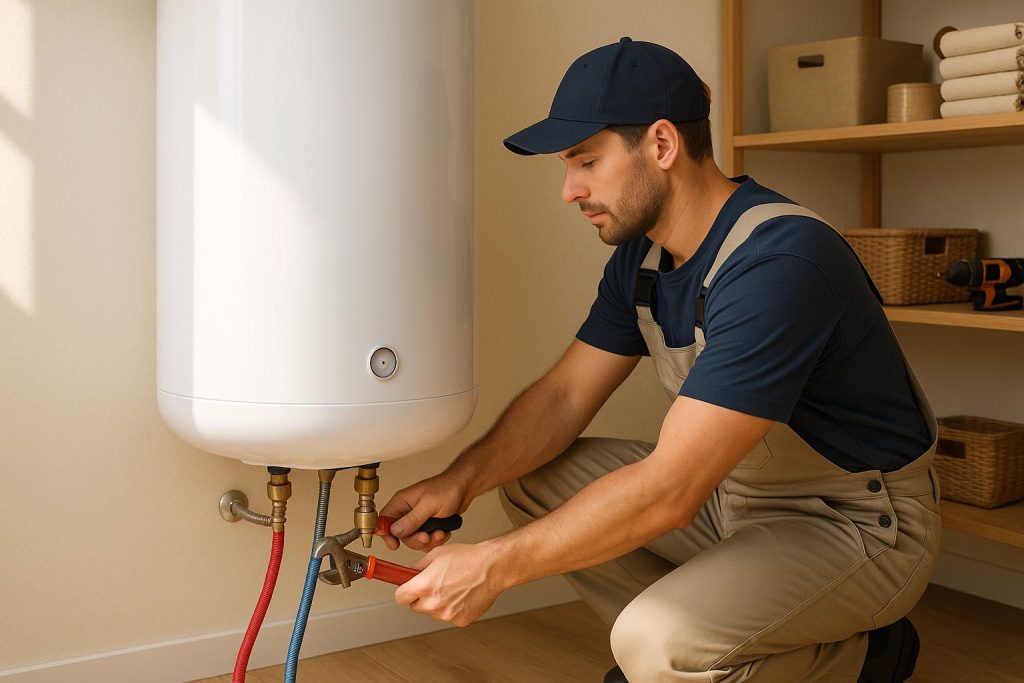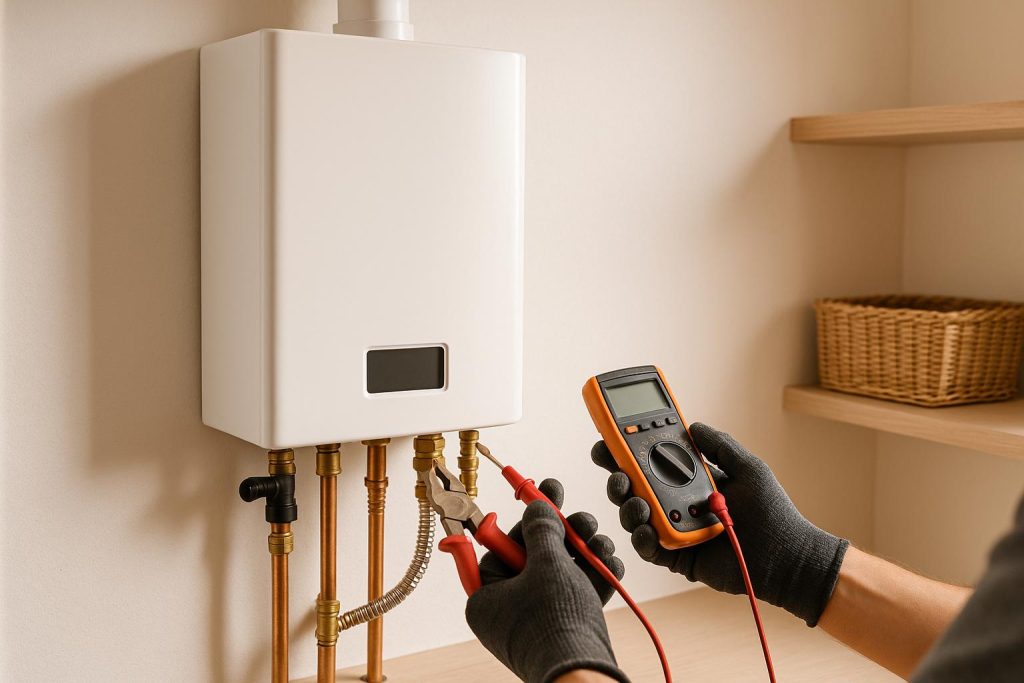Pets bring boundless joy and companionship to our lives, but along with their love and playfulness comes the inevitable challenge of keeping a clean home. Whether it’s dog hair on the couch, muddy paw prints on the floor, or the occasional accident, pet owners know that maintaining cleanliness is a constant battle. However, it’s a battle worth fighting, as a clean home benefits both pets and their owners.

A clean environment is healthier, more comfortable, and less stressful for everyone involved. This comprehensive guide will provide you with practical tips and strategies to keep your home spotless and fresh, even with furry friends around. From understanding pet behavior and grooming needs to mastering daily and deep cleaning routines, we’ll cover everything you need to know to create a harmonious and clean living space for you and your pets.
1: Understanding Pet Behavior and Needs

Pet Grooming Essentials
Regular grooming is the first step in maintaining a clean home with pets. Grooming not only keeps your pet looking good but also reduces the amount of hair and dander they shed around the house.
- Brushing: Regular brushing is essential, especially for long-haired breeds. Brushing helps to remove loose hair and dirt before it can spread around your home. The frequency of brushing depends on your pet’s breed and coat type, but most pets benefit from a daily or weekly brushing.
- Bathing: Bathing your pet regularly will help to keep their coat clean and reduce odors. Use a pet-friendly shampoo and ensure you rinse thoroughly to avoid any residue that could irritate their skin.
- Professional Grooming: For pets with more complex grooming needs, such as trimming and clipping, professional groomers can be a great help. They have the tools and expertise to handle even the most stubborn mats and tangles.
Understanding Shedding
Shedding is a natural process for most pets, but it can be managed with the right approach. Understanding your pet’s shedding patterns can help you anticipate and control the mess.
- Shedding Patterns: Different pets shed differently. Dogs and cats have varying shedding cycles, often influenced by the seasons. For instance, many dogs have a heavy shed in the spring and fall.
- Managing Shedding: Regular grooming and brushing are your best defenses against excessive shedding. Using a high-quality vacuum with pet hair attachments can help keep your floors and furniture free from hair. Additionally, feeding your pet a healthy diet rich in omega-3 fatty acids can improve their coat and reduce shedding.
Behavioral Training
Proper training can significantly reduce the mess your pet creates. Training your pet to follow certain rules can make a big difference in maintaining a clean home.
- Litter Training: For cat owners, proper litter training is crucial. Choose a high-quality litter and clean the litter box daily to prevent odors and mess.
- House Training: For dog owners, house training is a must. Consistent routines and positive reinforcement can help your dog learn where and when to relieve themselves.
- Addressing Messy Behaviors: Behaviors like scratching, digging, or chewing can create a lot of mess. Provide appropriate outlets for these behaviors, like scratching posts for cats and chew toys for dogs, to keep them from damaging your home.
2: Daily Cleaning Routine

Floor Care
Keeping your floors clean is one of the biggest challenges for pet owners. Different flooring types require different care routines.
- Carpets: Regular vacuuming is essential to keep carpets free from pet hair and dander. Consider using a vacuum with a HEPA filter to trap allergens. For deeper cleaning, a steam cleaner can help remove stains and odors.
- Hardwood Floors: Hardwood floors can be easier to clean than carpets, but they still require regular maintenance. Sweep or vacuum daily to pick up pet hair and dirt, and use a damp mop with a pet-safe cleaner for deeper cleaning.
- Tile and Laminate: These flooring types are generally easier to clean. Regular sweeping and mopping with a pet-friendly cleaner will keep them looking good.
Furniture Care
Furniture can quickly become covered in pet hair and odors. Taking proactive steps can help keep your furniture clean and fresh.
- Protective Covers: Use washable covers and throws on your furniture to protect them from pet hair and dirt. These covers can be easily removed and washed as needed.
- Vacuuming Upholstery: Regularly vacuuming your furniture will help remove pet hair and dander. Use attachments designed for upholstery to get into crevices and corners.
- Cleaning Solutions: For any accidents or spills, use pet-safe cleaning solutions to clean and deodorize your furniture. Spot clean as needed to prevent stains from setting in.
Managing Pet Areas
Designating specific areas for your pets can help contain the mess and make cleaning easier.
- Pet Beds and Crates: Keep pet beds and crates clean by washing bedding regularly. Choose washable materials and consider having a spare set of bedding to use while the other is being cleaned.
- Feeding Areas: Feeding areas can become messy quickly. Use mats under food and water bowls to catch spills, and clean the bowls daily.
- Toys and Accessories: Regularly clean pet toys and accessories. Soft toys can often be washed in the washing machine, while hard toys can be soaked in a solution of vinegar and water.
3: Weekly and Deep Cleaning

Deep Cleaning Tips
Even with a diligent daily cleaning routine, weekly and deep cleaning sessions are necessary to keep your home truly clean.
- Floors and Carpets: For carpets, consider using a carpet cleaner or hiring a professional cleaning service every few months. For hard floors, a thorough mopping with a deep-cleaning solution will help remove any built-up dirt.
- Upholstery and Curtains: Don’t forget to clean your upholstery and curtains. These can harbor pet hair and odors. Use a vacuum with appropriate attachments and consider steam cleaning periodically.
- Windows and Walls: Pets can leave nose prints and fur on windows and walls. Wipe down these surfaces regularly with a pet-safe cleaner.
Odor Control
Keeping your home smelling fresh can be a challenge with pets, but it’s not impossible.
- Identify and Eliminate Sources: The first step in odor control is identifying the source. Regularly clean areas where your pet spends a lot of time.
- Natural Odor Eliminators: Consider using natural odor eliminators like baking soda and vinegar. These are safe for pets and effective at neutralizing odors.
- Commercial Products: There are many commercial odor eliminators specifically designed for pet owners. Look for enzyme-based cleaners that break down the source of the odor rather than just masking it.
Air Quality Improvement

Maintaining good air quality is crucial, especially if you or anyone in your household has allergies.
- Air Purifiers: Investing in a good air purifier can help remove pet dander and odors from the air. Look for models with HEPA filters for the best results.
- HVAC Maintenance: Regularly replace HVAC filters and consider using filters designed to capture pet dander. Clean air ducts periodically to remove accumulated dust and hair.
4: Seasonal and Special Occasion Cleaning
Spring Cleaning with Pets
Spring is a great time to do a thorough cleaning of your home, especially with pets.
- Spring Cleaning Checklist: Create a checklist that includes tasks like deep cleaning carpets, washing windows, and cleaning out pet beds and toys.
- Handling Shedding: Spring is a heavy shedding season for many pets. Increase grooming frequency and use tools like deshedding brushes to manage the extra hair.
Holiday Preparations
Holidays can be a busy time, especially with guests visiting. Preparing your home in advance can help manage the chaos.
- Guest and Pet Interactions: Plan ahead for how to manage your pets with guests. This might include setting up a quiet space for your pets to retreat to if they get overwhelmed.
- Keeping Clean: Increase your cleaning routine during the holiday season. Daily vacuuming and wiping down surfaces will help keep your home presentable.
5: Health and Hygiene

Pet Health and Cleanliness
Keeping your pet healthy is an important part of maintaining a clean home.
- Vet Check-ups: Regular vet visits ensure your pet is healthy and free from parasites that can affect your home’s cleanliness.
- Dental Hygiene: Dental health is often overlooked but can impact your pet’s overall health and your home’s cleanliness. Regular brushing and dental treats can help.
- Flea and Tick Prevention: Use preventative treatments to keep fleas and ticks at bay. These pests can cause significant discomfort for your pet and lead to infestations in your home.
Human Health Considerations
Maintaining a clean home with pets is also important for your health.
- Allergen Management: Regular cleaning helps manage pet allergens. Using air purifiers and cleaning filters can reduce the presence of allergens in your home.
- Handling Pet Waste: Always handle pet waste with care. Use gloves when cleaning litter boxes or picking up after your dog, and wash your hands thoroughly afterwards.
6: Practical Tips and Tricks

Quick Cleaning Hacks
Here are some quick tips to make cleaning up after your pet easier:
- Lint Rollers: Keep lint rollers handy to quickly remove pet hair from clothing and furniture.
- Microfiber Cloths: Use microfiber cloths for dusting and wiping down surfaces. They’re effective at trapping pet hair and dust.
- Squeegees: A rubber squeegee is great for removing pet hair from carpets and upholstery.
Eco-Friendly Cleaning Solutions
Using eco-friendly cleaning solutions is not only good for the environment but also safer for your pets.
- DIY Cleaners: Make your own cleaning solutions using natural ingredients like vinegar, baking soda, and lemon juice. These are effective and safe for pets.
- Green Products: Look for commercial cleaning products that are labeled as eco-friendly and pet-safe. These products are often free from harsh chemicals.
7: Creating a Pet-Friendly Home Environment
Pet-Safe Zones
Designating specific areas for your pets can help contain messes and create a more organized home.
- Pet Spaces: Create comfortable spaces for your pets with their beds, toys, and food bowls. This helps keep their mess contained to one area.
- Safety Measures: Ensure that areas where your pets spend time are safe and free from hazards like electrical cords and toxic plants.
Interior Design Tips
Designing your home with pets in mind can help maintain cleanliness and style.
- Pet-Friendly Fabrics: Choose fabrics that are durable and easy to clean. Leather, microfiber, and outdoor fabrics are good options for furniture.
- Flooring Choices: Consider flooring materials that are easy to clean and resistant to scratches and stains. Tile, laminate, and vinyl are great options for pet owners.
Conclusion
Maintaining a clean home with pets may seem daunting, but with the right strategies and routines, it’s entirely possible. Regular grooming, understanding your pet’s behavior, and implementing daily and deep cleaning routines are key to keeping your home fresh and clean. By using pet-friendly products and creating designated pet areas, you can minimize mess and make cleaning more manageable. Remember, a clean home is not only more pleasant to live in but also healthier for you and your furry friends. With a little effort and consistency, you can enjoy the best of both worlds: a loving pet and a clean, comfortable home. Happy cleaning!





